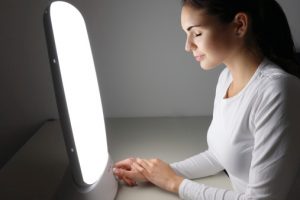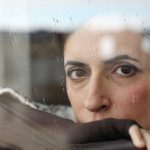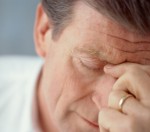 Major depressive disorder and winter depression (SAD) have been shown to be treatable with light therapy. Until now light therapy has only been effective in the treatment of seasonal affective disorder (SAD) – a type of depression that occurs in the winter months. This is because one of the major causes of SAD is a lack of sunlight, which occurs naturally during the winter.
Major depressive disorder and winter depression (SAD) have been shown to be treatable with light therapy. Until now light therapy has only been effective in the treatment of seasonal affective disorder (SAD) – a type of depression that occurs in the winter months. This is because one of the major causes of SAD is a lack of sunlight, which occurs naturally during the winter.
Major depressive disorder is characterized by experiencing at least two weeks of major depressive episodes that lead to distress or disability. It cannot be associated with a history of mania or hypomania and cannot be linked with substance abuse.
Advertisement
Seasonal affective disorder is a form of depression that commonly occurs in the winter months when hours of sunlight become reduced. This can cause feelings of depression, anxiety and create other mood changes.
New research suggests that light therapy can also be an effective treatment option for major depressive disorder as well.
Light therapy effective for non-seasonal major depressive disorder
 Light therapy is the exposure to light brighter than that found indoors but not as bright as direct sunlight. Light therapy does not use ultraviolet lights, full-spectrum lights, heat lamps or tanning beds and exposing yourself to these types of light will not yield the same effects as light therapy.
Light therapy is the exposure to light brighter than that found indoors but not as bright as direct sunlight. Light therapy does not use ultraviolet lights, full-spectrum lights, heat lamps or tanning beds and exposing yourself to these types of light will not yield the same effects as light therapy.
New findings suggest that light therapy combined with antidepressants can be useful in the treatment of major depressive disorder. Typical treatment of major depressive disorder includes psychotherapies and antidepressants, but remission rates are quite low, increasing the need for more therapeutic treatments.
The study was conducted in a double-blind and placebo-and-sham-controlled trial to evaluate the effectiveness of light therapy alone and in combination with antidepressants in comparison to a placebo.
In eight week, 122 patients either took light therapy and a placebo pill, a placebo device with an antidepressant, light therapy with an antidepressant or a placebo pill with a placebo device.
The combination of light therapy and an antidepressant was the most effective in treating major depressive disorder.
Although the mechanisms are still unknown as to why light therapy is effective, previous research has shown it to be effective in treating SAD – another form of depression.
Does light therapy prevent winter depression (SAD) as well?
 The lights used in light therapy produce 2,500 to 10,000 lux (measurement of light received). To put this into perspective, an average living room light is only 100 lux. A person sits in front of the light with their eyes open for 15 minutes to two hours – exposure is usually built up over time. Light therapy is generally most effective first thing in the morning, and a medical professional can help you with the proper duration, intensity and timing of the day.
The lights used in light therapy produce 2,500 to 10,000 lux (measurement of light received). To put this into perspective, an average living room light is only 100 lux. A person sits in front of the light with their eyes open for 15 minutes to two hours – exposure is usually built up over time. Light therapy is generally most effective first thing in the morning, and a medical professional can help you with the proper duration, intensity and timing of the day.
In research studies light therapy shows to be effective in up to 75 percent of those with SAD. Some participants see improvements within days, while for others it may take weeks. If improvements are not seen within a few weeks, antidepressants may also be prescribed as combination therapy.
To increase the effectiveness of light therapy, it’s important to consider some of the following suggestions.
- Take daily walks outside.
- Increase aerobic activity under bright lights.
- Manage stress.
- Eat healthy.
- Avoid exposure to bright light in the evening, which could shift sleeping patterns.
Things to consider when buying a light box for treating depression
Although all light boxes are designed to perform the same task, there are still varieties of them available and knowing which one to get can mean the difference between receiving benefits or not.
One thing to consider prior to purchasing a light box is that many insurance companies do not cover this cost; therefore, you are paying out of pocket. Additionally, light boxes can provide different intensity levels. It is best to consult your doctor or health care professional in order to determine which intensity is best for your own needs.
Light boxes can also come in different sizes and come with different features. Because light boxes are not approved by the FDA, it’s important to fully understand what each feature provides, and if you have additional questions, contact the manufacturer or talk to your doctor about it.
In the meantime, prior to your purchase, here are some questions to consider and ask yourself.
- Is the light box created to specifically treat SAD?
- How bright is it?
- How much UV does it release?
- Does it use LEDs?
- Does it emit blue light?
- Can it cause eye damage?
- Is it the right design?
- Can you put it in the right location?
- Did your doctor recommend it?
Pros and cons of light therapy for depression
When considering light therapy, it’s important to weigh the pros and cons in order to help make your decision.
Pros:
- Non-invasive
- Safe
- Convenient
- Has minimal side effects

Cons:
- May cause headache
- May cause insomnia if used in the evening
- Sunburn
- Fatigue
- Dry eyes and nose
- Hypomania
Experts suggest that light therapy be used in conjunction with traditional methods for best results. Also, light therapy should first be used under the supervision of a health care professional before venturing out and using one on your own.
Related Reading:
Talk therapy (psychotherapy) benefits schizophrenia, depression and SAD
Talk therapy has been found to be an effective form of treatment for mental health as well as treating mental disorders such as schizophrenia. A recent study revealed that over two million people in America have a diagnosis of schizophrenia and primary treatment involves the use of medications. Continue reading…
Advertisement
Serotonin deficiency causes depression, mood disorders
A serotonin deficiency can cause depression and mood disorders. Serotonin is a chemical naturally found in the body that carries signals between nerves. It is produced in the brain and the intestines; in fact, about 80 to 90 percent of it can be found in the gastrointestinal tract. Continue reading…
Sources:
http://www.mentalhealth.com/home/dx/majordepressive
http://www.webmd.com/depression/features/seasonal-affective-disorder
http://www.webmd.com/depression/tc/light-therapy-topic-overview
http://www.eurekalert.org/pub_releases/2015-11
http://www.unh.edu/health-services/sites/unh.edu.health-services/files/media/PDF/SelfCareGuide/SADLightTherapy
http://www.mayoclinic.org/diseases-conditions/seasonal-affective-disorder/in-depth/seasonal-affective-disorder-treatment
http://www.healthline.com/health/depression/light-therapy
